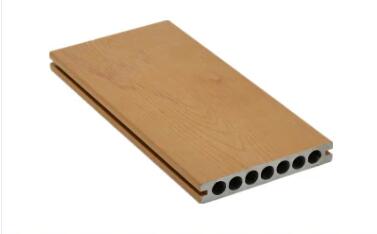Harmonizing Spaces: Unveiling the Acoustic Dynamics of Plastic Flooring and Its Impact on Sound Transmission
2024-01-05
Introduction:
Flooring is a defining feature of interior spaces, not only influencing aesthetics but also contributing to the overall acoustic environment. Plastic flooring, known for its versatility and practicality, prompts inquiries about its acoustic performance and the potential impact on sound transmission. In this blog, we'll delve into the acoustics of plastic flooring, exploring its characteristics and addressing whether it plays a role in sound absorption or transmission.
1. Types of Plastic Flooring:
1. Vinyl Flooring:
- Resilient Surface: Vinyl flooring, a popular plastic option, is known for its resilient and somewhat cushioned surface, providing a degree of impact absorption.
2. Laminate Flooring:
- Harder Surface: Laminate flooring, while not entirely plastic, typically has a harder surface. It may not inherently contribute to sound absorption but can impact the overall acoustics of a space.
3. Luxury Vinyl Tile (LVT):
- Versatile Acoustic Properties: Luxury Vinyl Tile (LVT) often comes in various thicknesses and constructions, allowing for versatility in acoustic performance.
2. Acoustic Characteristics of Plastic Flooring:
1. Impact Sound Insulation:
- Resilient Qualities: The resilient nature of plastic flooring, especially vinyl, contributes to impact sound insulation. It can absorb and dampen the noise generated by footsteps, reducing the transmission of sound to the floor below.
2. Surface Reflection and Sound Reflection:
- Hard vs. Soft Surfaces: While some plastic flooring surfaces may be harder, contributing to sound reflection, others with a softer and more textured finish can absorb sound to a certain extent.
3. Room Echo and Reverberation:
- Influence on Room Acoustics: The type of plastic flooring used can influence the room's acoustics by impacting sound reflection, echo, and reverberation.
3. Installation and Underlayment Impact:
1. Floating Floors and Underlayment:
- Floating Installations: In some cases, plastic flooring is installed as a floating floor, allowing for the use of underlayment materials that provide additional sound insulation.
2. Underlayment Options:
- Cushioned Underlayment: Underlayment options, such as cork or foam, can be added beneath the plastic flooring to enhance sound absorption and reduce impact noise.
4. Impact on Sound Transmission:
1. Footstep Noise Reduction:
- Minimizing Impact Sounds: Plastic flooring, particularly vinyl with its cushioned surface, can help minimize the transmission of footstep noises and other impact sounds, creating a quieter environment.
2. Speech and General Noise:
- Moderate Sound Absorption: While plastic flooring may not have the same sound-absorbing properties as softer materials, it can still contribute to moderate sound absorption, impacting speech clarity and reducing general noise levels.
5. Considerations for Commercial Spaces:
1. Acoustic Needs in Public Areas:
- Tailoring Solutions: In commercial spaces, especially those with higher foot traffic, the acoustic needs may vary. Selecting the right type of plastic flooring and incorporating additional acoustic measures may be necessary.
Conclusion: Striking the Right Note with Plastic Flooring
Plastic flooring, with its varied types and constructions, can play a role in shaping the acoustic ambiance of a space. While not a substitute for dedicated acoustic materials, plastic flooring can contribute to impact sound insulation and moderate sound absorption. The choice of flooring type, installation method, and the incorporation of underlayment are crucial factors in optimizing the acoustic characteristics of plastic flooring. By considering these elements, homeowners and designers can create spaces that harmonize both visually and acoustically, ensuring a balance between aesthetic appeal and auditory comfort.



